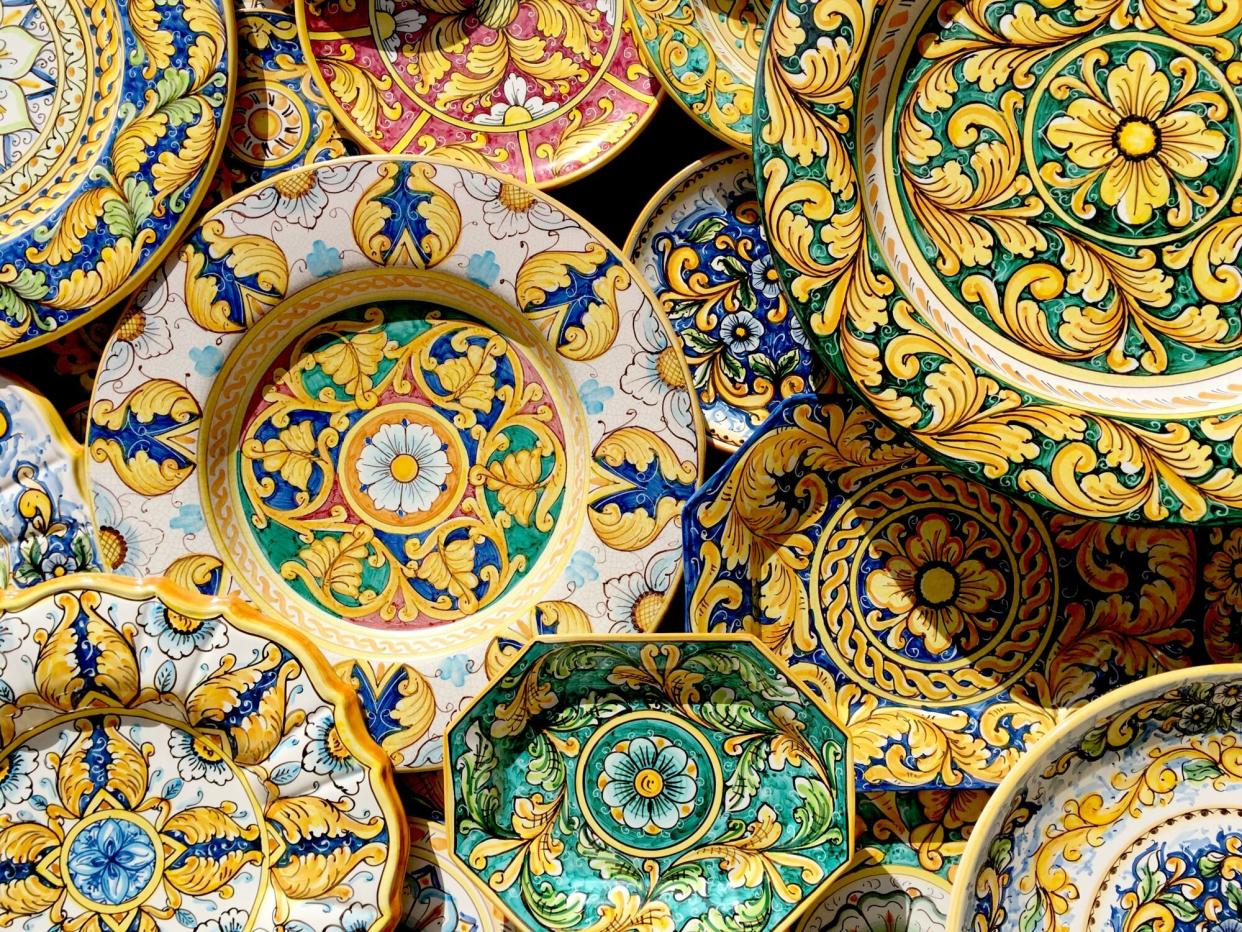What Is Majolica Pottery?

Myvector / Getty Images
Something about majolica evokes a feeling of the outdoors—of frogs, leafy greens, and mushrooms. It's a curious feeling, one that seems to have been as prevalent in 15th century Spain where the predecessors of this tin-glazed earthenware originated (and where, of course, it isn't especially damp), as it became in England—birthplace of the modern umbrella and cabinets full of boggish, Victorian majolica pieces. In more recent years, collectors have caught quite a case of the bug, too.
Related: Your Guide to Identifying Pottery and Porcelain Marks
The History of Majolica
Majolica is a richly colored, heavyweight clay pottery that is coated with enamel, ornamented with paints, and, finally, glazed. The name is likely derived from the Spanish island of Majorca—said to be known once as Majolica—where the first of these pieces were made. Later, they were also crafted in Italy and France (where they were called faenza and faience, respectively, after the Italian city of Faenza, famous for its pottery). Majolica, in forms ranging from elegant to outlandish, was popular throughout Europe for centuries.
The pieces that today's collectors particularly covet are quirky Victorian English wares awash in mosses, water lilies, ducks, herons, and reeds. Add twigs, boughs, and shoots, and it's possible to own majolica bird's nests, willow baskets, grapevines, and even a tree trunk or two. On the whole, if you collect this earthenware, you'll almost certainly be a dedicated nature lover. You unquestionably love color, too, because majolica plates, pitchers, salt cellars, and garden seats are rendered in lustrous ochers and chocolates. You'll find the full range of greens as well—blue-greens, olives, kellys, hunters, and poisons—in the usual leaves, lichens, and shoots, with green woodpeckers and dragonflies hiding among them.
Determining Value
Majolica—especially those English-made pieces manufactured by Wedgwood, Minton, and George Jones from 1850 to 1900—is wildly collectible in the United States and Britain; it's also extraordinarily pricey. A pair of Minton garden seats, for example, can bring as much as $60,000. Thankfully, 19th century French, German, Austrian, and American majolica is often considerably less expensive. All kinds enjoy one particular advantage: For some unexplained reason, majolica enthusiasts unlike most ceramics collectors, don't seem to mind if their treasures have some surface damage—small cracks, for instance. (The same is not true for structural damage, such as a missing or broken part.) Joan Stacke Graham, veteran collector and coauthor of Majolica: A Complete History and Illustrated Survey ($86, amazon.com), says that there are still terrific opportunities for new collectors, particularly in the realm of American plates and pitchers, many of which can be found for $250 or less. "It's just as beautiful as English majolica, and a wonderful complement to a folk-art collection," she says.
Philip English, president of the Majolica International Society, based in New York City, speculates that many collectors are passionate about his favorite ceramic because its detailed ferns and ducks, warm colors, and adaptable shapes make it almost universally accessible. It's in limited but adequate supply as well—a prerequisite for any successful collectible. English advises potential first-time purchasers to seek out pieces that are both beautiful and useful. That isn't hard to do, he adds, since most majolica is functional.
But functional never means dull: Majolica's brilliant glazes, startling interiors in jaw-dropping pinks and turquoises, and glassy, cobalt-blue details are sumptuous and regal yet somehow fun. And functional isn't necessarily "normal size," either. The best majolica factories mastered the technique of firing gigantic objects in their kilns. Huge pieces were the tours de force of the British factories, which specialized in giant jardinieres and umbrella stands incorporating life-size creatures such as herons, fawns, and bear cubs.
So, if you'd like to share your home with some (possibly very big) earthenware that recalls the outdoors and, as Stacke Graham says, "makes you smile all day," try some earthy, ebullient majolica. It's a natural.

